Potrebujeme váš súhlas na využitie jednotlivých dát, aby sa vám okrem iného mohli ukazovať informácie týkajúce sa vašich záujmov. Súhlas udelíte kliknutím na tlačidlo „OK“.
ASTM E2696-09(2013)
Standard Practice for Life and Reliability Testing Based on the Exponential Distribution
Automaticky preložený názov:
Štandardná prax pre životnosť a spoľahlivosť testovania na exponenciálny distribúcie založená
NORMA vydaná dňa 1.4.2013
Informácie o norme:
Označenie normy: ASTM E2696-09(2013)
Poznámka: NEPLATNÁ
Dátum vydania normy: 1.4.2013
Kód tovaru: NS-45884
Počet strán: 42
Približná hmotnosť: 126 g (0.28 libier)
Krajina: Americká technická norma
Kategória: Technické normy ASTM
Kategórie - podobné normy:
Řízení jakosti a zabezpečování jakosti
Vlastnosti a konstrukce strojů, přístrojů, zařízení
Anotácia textu normy ASTM E2696-09(2013) :
Keywords:
acceptability constant, acceptance sampling, acceptance time, consumer&rsquo,s risk, exponential distribution, failure rate, hazard rate, life test, mean life, mean time to failure, OC, operating characteristic, producer&rsquo,s risk, rejection time, reliability, sample size, sampling plan, sequential life test, termination number, testing with replacement, testing without replacement, total life, ICS Number Code 03.120.10 (Quality management and quality assurance)
Doplňujúce informácie
| Significance and Use | ||||||
|
4.1 This practice was prepared to meet a growing need for the use of standard sampling procedures and tables for life and reliability testing in government procurement, supply, and maintenance quality control (QC) operations as well as in research and development activities where applicable. 4.2 A characteristic feature of most life tests is that the observations are ordered in time to failure. If, for example, 20 radio tubes are placed on life test, and ti denotes the time when the ith tube fails, the data occur in such a way that t1 ≤t2 ≤ ... ≤ tn. The same kind of ordered observations will occur whether the problem under consideration deals with the life of electric bulbs, the life of electronic components, the life of ball bearings, or the length of life of human beings after they are treated for a disease. The examples just given all involve ordering in time. 4.3 In destructive testing involving such situations as the current needed to blow a fuse, the voltage needed to break down a condenser, or the force needed to rupture a physical material, the test can often be arranged in such a way that every item in the sample is subjected to precisely the same stimulus (current, voltage, or stress). If this is done, then clearly the weakest item will be observed to fail first, the second weakest next, and so forth. While the random variable considered mostly in this guide is time to failure, it should be emphasized, however, that the methodology provided herein can be adapted to the testing situations mentioned above when the random variable is current, voltage, stress, and so forth. 4.4 Sections 6 and 7 describe general procedures and definitions of terms used in life test sampling. Sections 4.5 Whenever the methodology or choice of procedures in the practice requires clarification, the user is advised to consult a qualified mathematical statistician, and reference should be made to appropriate technical reports and other publications in the field. |
||||||
| 1. Scope | ||||||
|
1.1 This practice presents standard sampling procedures and tables for life and reliability testing in procurement, supply, and maintenance quality control operations as well as in research and development activities. 1.2 This practice describes general procedures and definitions of terms used in life test sampling and describes specific procedures and applications of the life test sampling plans for determining conformance to established reliability requirements. 1.3 This practice is an adaptation of the Quality Control and Reliability Handbook H-108, “Sampling Procedures and Tables for Life and Reliability Testing (Based on Exponential Distribution),” U.S. Government Printing Office, April 29, 1960. 1.4 A system of units is not specified in this practice. 1.5 This standard does not purport to address all of the safety concerns, if any, associated with its use. It is the responsibility of the user of this standard to establish appropriate safety and health practices and determine the applicability of regulatory limitations prior to use. |
||||||
| 2. Referenced Documents | ||||||
|
Podobné normy:
Historická
1.10.2012
Historická
1.1.2012
Historická
15.6.2009
Historická
1.1.2008
Historická
1.4.2013
Historická
1.11.2013
Odporúčame:
EviZak - všetky zákony vrátane ich evidencie na jednom mieste
Poskytovanie aktuálnych informácií o legislatívnych predpisoch vyhlásených v Zbierke zákonov od roku 1945.
Aktualizácia 2x v mesiaci !
Chcete vedieť viac informácii ? Pozrite sa na túto stránku.


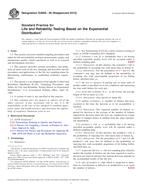
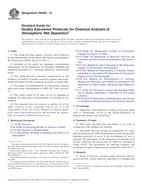 ASTM D6328-12
ASTM D6328-12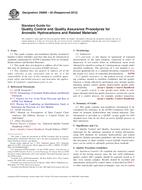 ASTM D6809-02(2012)..
ASTM D6809-02(2012)..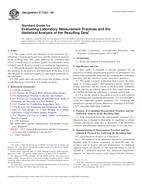 ASTM E1323-09
ASTM E1323-09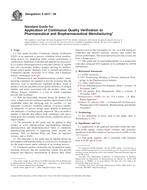 ASTM E2537-08
ASTM E2537-08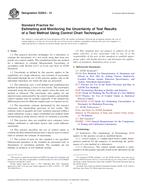 ASTM E2554-13
ASTM E2554-13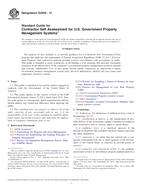 ASTM E2936-13
ASTM E2936-13
 Cookies
Cookies
